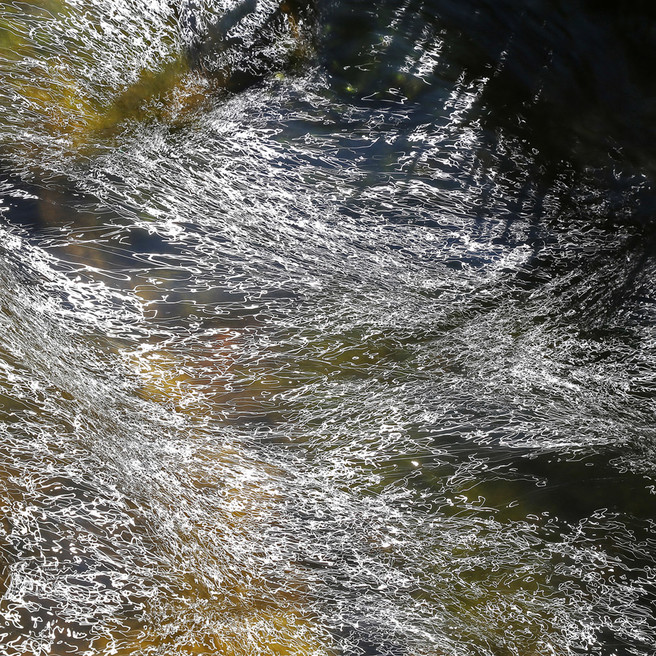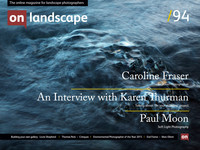Dark Shadow By Michéla Griffith

Thomas Peck
The real pleasure of photography is that it forces me to slow down and really look. That’s never easy in our rushed world, so a chance to stop, look and see is truly valuable.
Abstract photography, which is how I would almost classify this lovely photograph by Michéla Griffith (click here to read previous articles by Michela), engages the viewer in a completely different way from other photographic genres.
Unlike a landscape or a portrait there is a momentary hesitation, a second of uncertainty, as we ponder what it is that we are seeing. Abstraction demands engagement; the viewer must work to see and recognise. Why is this picture only almost an abstract? The shadow at the top right gives the game away. The eye quickly recognizes this as the shadow of tufts of grass, and therefore works out that the bright squiggles must therefore be the reflection of strong sunlight on the water of a stream. Recognition and understanding floods in. In this sense the image is more of an ‘extract’ rather than an abstract.
It isolates a small section from a larger scene. It has forced our view and presented to us a detail for our delectation. The viewer has still had to engage, and the act of recognition becomes part of the pleasure taken in the image. So what do we see in this image? And how does it make us feel? A square image, colour palette reduced, a focus on bright and dark areas.

Afternoon sun decorates the water's surface with trails of light. Bankside grasses cast a dark shadow.
The focus is at first drawn by the sharp glistening lines. They are quite extraordinary. Here is a vision that the camera can see but the naked eye does not. The ephemeral moment has been frozen and the photographer presents us with a lyrical rather than a literal truth. If the image were composed of just these lines then interpretation would be much more difficult – truly abstract.
In size and shape it mirrors the bottom left hand corner which is bathed in bright lights. Metaphorically the dark more than counter-balances the brightness. It suggests a presence, a threat to the light. The photographer has clearly felt this and thus decided to call an image, so glittering in bright light, ‘Dark Shadow’. Szarkowski, Director of Photography at MoMA, when commenting on Dorothea Lange’s photographs described the skill which we see Griffith exemplifying here: “It is easier to make clear pictures on a gray day than in sunshine […]. Light without hard shadows describes an object as we know it to be, while sunlight describes what it happens to look like at a particular moment, with its permanent form obscured and distorted by the pattern of accidental darks and lights. Griffith has made a picture is which is not easy to see, let alone photograph. Light and dark indeed.

